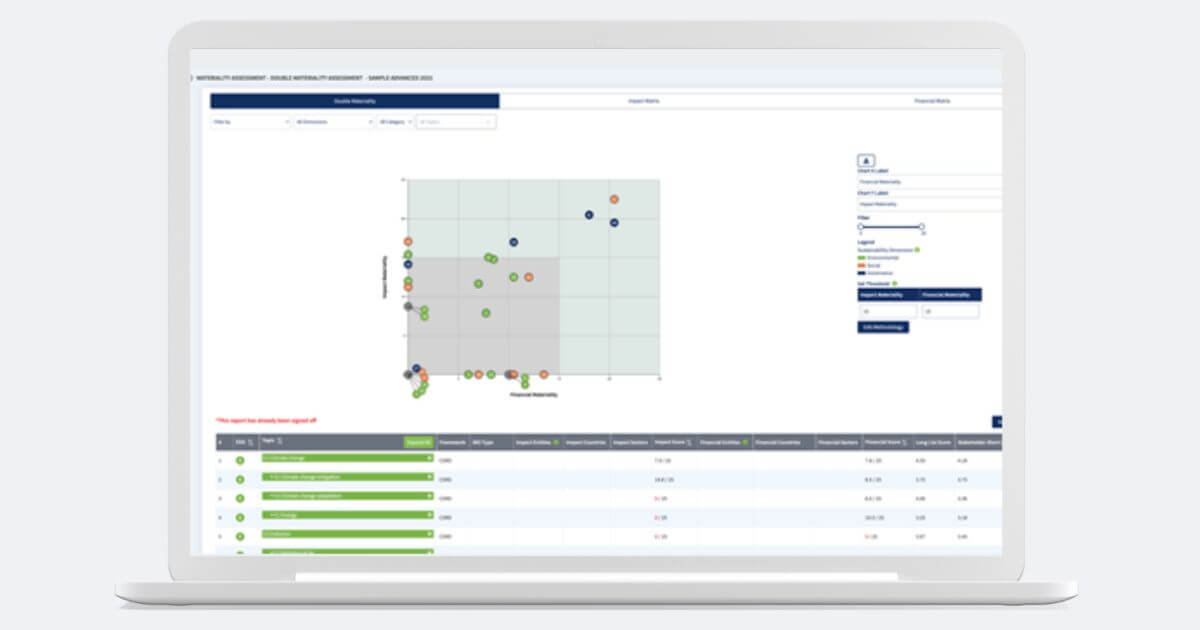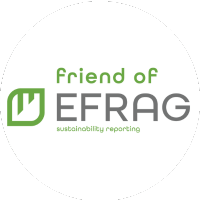Double Materiality Reporting – a complete solution
Double Materiality Assessment
Assess your double materiality with the Double Materiality Assessment Module and engage with your internal and external stakeholders. Extensive tools to determine your double materiality topics for your business in line with ISSB, GRI and CSRD regulations.
Use ESG Playbook’s materiality assessment tool to identify the sustainability topics that matter most to your organization. Get a list of priority actions for each topic based on your maturity level.
Key Benefits
Stakeholder-Driven ESG Engagement
Engage stakeholders on key Sustainability material topics, ensuring alignment with business priorities and regulatory expectations.
CSRD-Compliant Double Materiality Assessments
Perform double materiality assessments to meet CSRD regulations, integrating both financial and impact-based Sustainability risks.
Industry-Specific & Customizable Insights
Access sector-specific guidance or tailor your own Sustainability topics to ensure a relevant and strategic approach to materiality.
Advanced Risk Management & Board Oversight
Enhance risk assessment, annual reporting, and governance by incorporating insights from 3,000+ Sustainability risk factors.
Climate Risk Scenario Analysis & Automation
Leverage third-party climate risk models to map physical and transition risks, supporting data-driven decision-making.
Integrated Sustainability Strategy & Assurance Tools
Seamlessly connect materiality assessments with policy frameworks, goal-setting modules, and audit-ready assurance tools for full compliance.
One Platform
Comprehensive Sustainability Reporting. Simplified for you.




